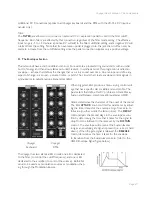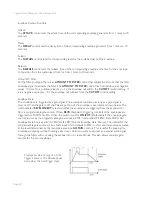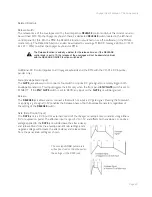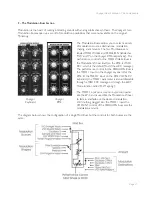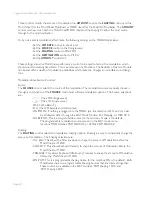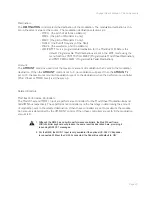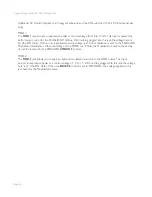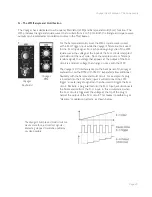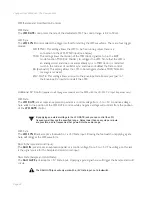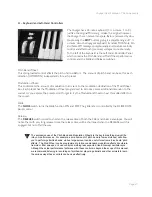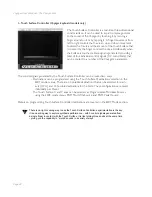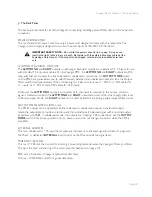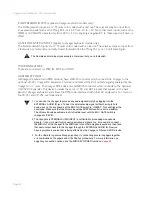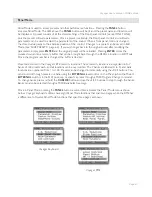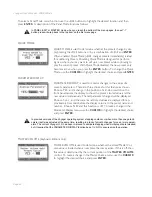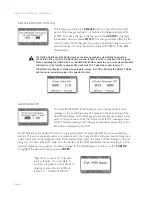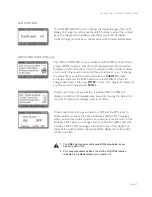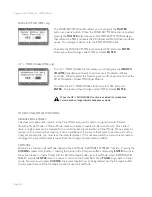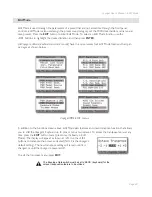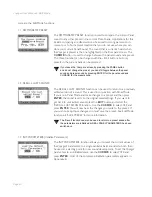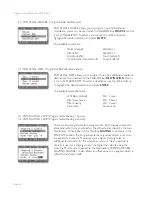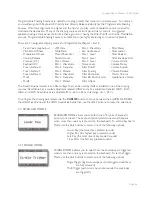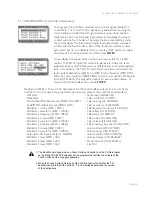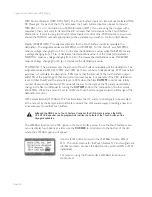
Page 40
Voyager User’s Manual - The Components
Page 41
Voyager User’s Manual - The Components
K – Interface Panel
The Interface Panel, located in the top center of the instrument, provides a status display and controls for
all of the Voyager’s software functions and instrument settings.
The status display is an LCD screen located within the Interface Panel. When the Voyager is first powered
on, the screen will display a greeting message. The message will stay on the screen for a few seconds, and
then the screen will display the active preset. This preset will be the last preset in use when the Voyager was
powered down.
The Voyager has three operating modes which are accessed on the Interface Panel:
PANEL: Used for accessing the Voyager’s presets and performance functions.
EDIT: Used for editing the parameters of a preset which are not accessed through the front panel
control knobs and switches. Naming and saving presets is done in EDIT mode.
MASTER: Used for accessing global settings for the Voyager, and data send and receive functions.
The LED’s located above the PANEL, EDIT and MASTER buttons will be lit when the respective operating
mode is selected. A MIDI LED located near the LCD screen will light whenever the Voyager receives an
incoming MIDI message on the correct MIDI channel.
Section Controls:
Panel:
Pressing the
PANEL
button places you in Panel Mode, where you select Voyager presets and basic perfor-
mance functions. For complete description of Panel Mode operations and functions, see page 43
.
Edit:
Pressing the
EDIT
button places you in Edit Mode, where you can edit menu-based preset parameters. For
a complete description of the Edit Mode operations and functions, see page 48.
Master:
Pressing the
MASTER
button places you in Master Mode, where you can access global settings, MIDI options
and operating system functions. For a complete description of the Master Mode operations and functions,
see page 61.
Voyager Keyboard
Voyager RME

